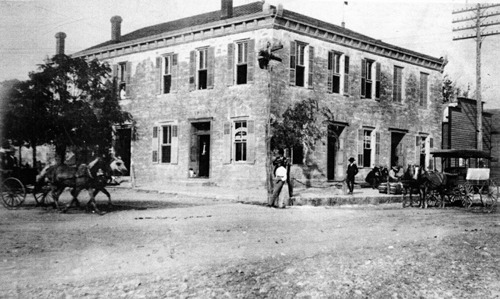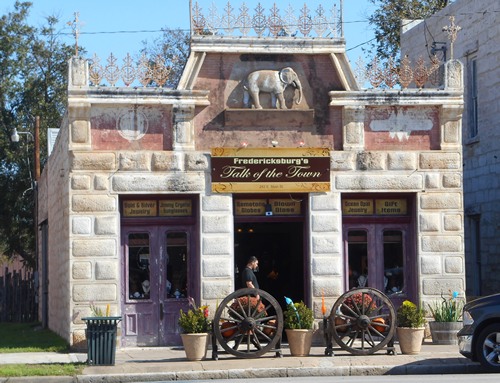Books by
Michael Barr
Order Here: |
|
The
first mark of civilization on the advancing western frontier was a
saloon. Frontiersmen built structures of lesser importance, like houses,
churches and schools, as they got around to it.
Saloons were about more than just drinking. Saloons were gathering
places. Drinking, after all, is best done in the company of others.
From 1860 to 1920 saloons dominated social life in small towns and
big cities all over America. They were boisterous men's clubs where
mostly working class menfolk with callused elbows and strong opinions
debated politics and argued the important issues of the day.
Saloons and politics went together like coffee and the morning paper.
Before some counties had courthouses or city halls, men conducted
city and county business in saloons.
Saloons were democratic for their day. Every man was equal in a saloon.
A thirsty patron checked his college degree and his social status
at the door before he bellied up to the rail to wet his whistle. A
saloon was a beer drinker's republic where men could passionately
debate the issues on a more or less equal basis.
In 1897 there were an estimated 250,000 saloons in America. In today's
terms that's 20 saloons for every Starbucks.
In 1907 there were more saloons in Fredericksburg, Texas than tourists.
A lineup of drinking establishments scattered along San Saba Street,
now Main Street, included the Buckhorn Saloon, the Bismarck Saloon,
the Capital Saloon, the Crystal Saloon, Peter's Saloon, the White
Elephant Saloon, and the Bank Saloon. |
 |
Buckhorn Saloon
in Fredericksburg
Photo
courtesy Gillespie County Historical Society |
Beer was warm
as sunshine and sold for a nickel a glass.
The decor of saloons often reflected local culture. Cow horns and
buffalo hides decorated saloons on the plains. Moose horns dangled
from the ceiling in saloons in Montana.
In the Texas Hill
Country it was deer horns. Antlers covered the walls of the Buckhorn
Saloon, one of the most popular watering holes in Fredericksburg.
The Buckhorn occupied the lot where Security State Bank now stands.
Most saloons in Fredericksburg
had pool tables and some form of gambling. In the early 20th century
some Fredericksburg
saloons had contraptions called "marble machines" - an early form
of slots. The White Elephant Saloon had a separate room out back where
certain men played high stakes poker.
Many a horse race began with a liquored up cowboy talking trash in
a saloon. In Fredericksburg
the race track was the unpaved expanse of San Saba Street. The Nimitz
Hotel was the starting line. The finish line was the front door of
the Buckhorn Saloon where winners celebrated and losers drowned their
sorrows. |
 |
By
1910 saloons in Fredericksburg
sold wines, liquors, cigars and all kinds of keg and bottled beers.
A popular beer at the time was called "Santone," bottled by the Lone
Star Brewing Company of San
Antonio.
When Texas Blue Laws ordered drinking establishments to close at midnight
and on Sundays, saloons complied - sort of. The
White Elephant Saloon always locked the front door at the appointed
time, but the back door sometimes stayed open all night and all weekend,
especially if patrons were particularly numerous and thirsty or a
hot poker game was in progress.
Saloons were a way of life, and owning one was a perfectly respectable
occupation. Herman Ochs, owner of the Buckhorn Saloon, served as Gillespie
County Sheriff from 1910 to 1918.
Saloons prospered until Prohibition wiped them out in 1919. Some historians
insist that Prohibition was as much about politics as drinking. Prohibition,
they say, was about the desire of the wealthy class to suppress the
working man's vote by shutting down the places where political ideas
formed and unions organized.
When the country repealed Prohibition in 1933, most people assumed
saloons would return. But saloons never made a comeback. They were
from another time. They were too rowdy. Women and minorities were
excluded.
Drinking establishments slowly became more inclusive and more polite.
They became bars, pubs, taverns, lounges, cantinas, breweries, beer
gardens, ice houses, and tasting rooms.
Saloons marked the beginning and the end of an era. They were the
first imprint and the last bastion of the frontier culture. |
© Michael
Barr
"Hindsights" December
1 , 2018 Column
Sources:
"Two Courthouses," Fredericksburg Standard, August 10, 1939.
"White Elephant Saloon - Main Eye Catcher," Fredericksburg Standard,
July 2, 1975.
"We're Proud of Fredericksburg and our Heritage," Fredericksburg
Standard, May 4, 1977.
"Buildings at Bank Location Steeped in Local History," Fredericksburg
Standard, April 17, 1963. |
|
|